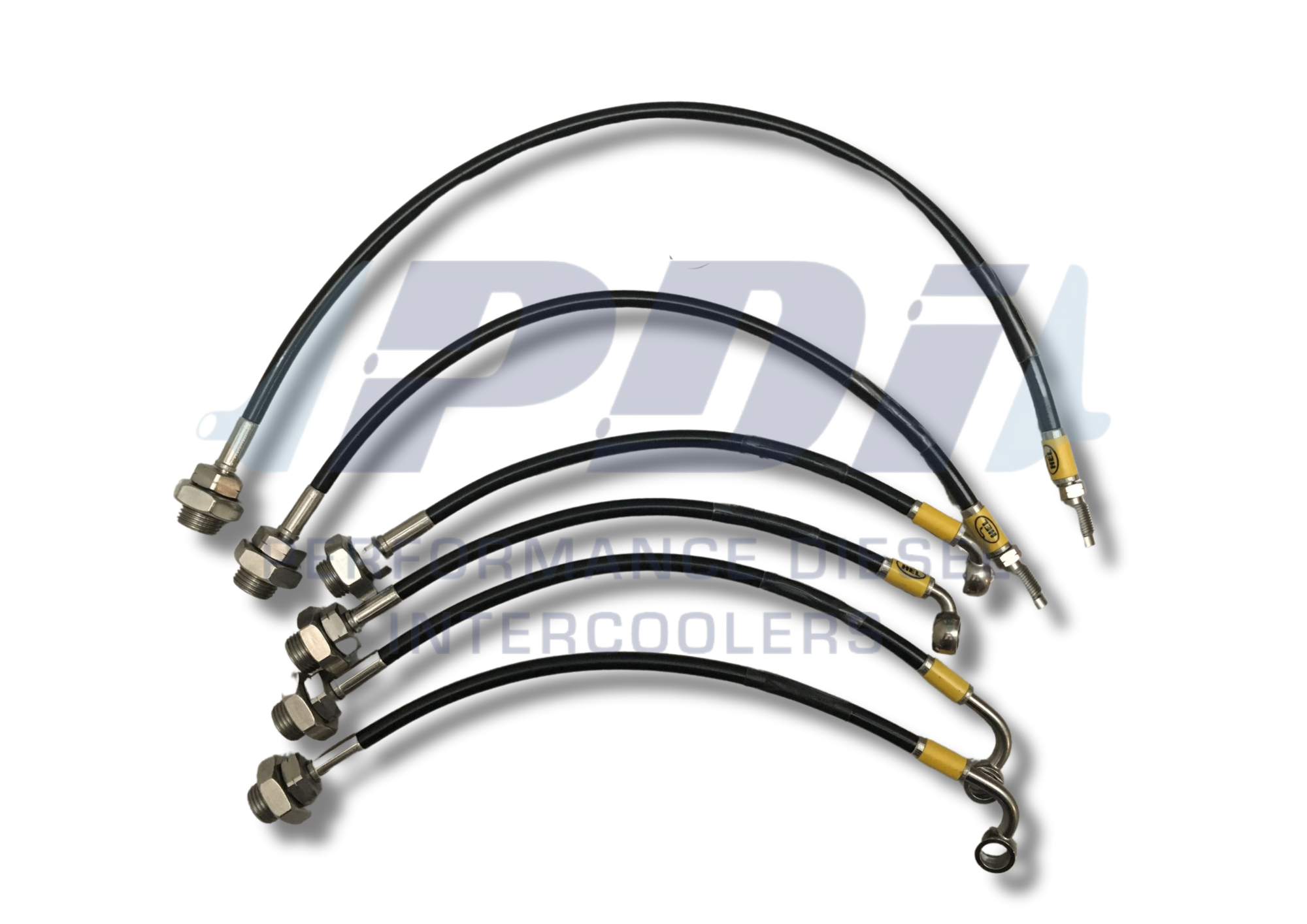Landcruiser 80 Series PDI 4WD Brake Upgrade Parts & Kits.
Landcruiser 80 Series PDI 4WD Brake Upgrade Parts & Kits.
After owning and driving many different 4WD over the years and being involved in the diesel performance game for a while where we get to drive many customers cars as well some that just don't stop well. Certain models even have a reputation for not stopping easily.
One of the those is the 79 series, which are fine for normal use, but just don't pull up well if you have to stop in a hurry. The brakes on the PDI 79 Series have been amazing since the day the PDI dual diaphragm brake booster was fitted. Without a doubt this was the biggest improvement possible to braking.
Its great being able to pull up hard after accelerating hard and waiting late to brake before a corner. The original disks and 4WD pads stayed in there until they were worn out. Towing a heavy car trailer (loaded) and without functional brakes doesn't mean we couldn’t pull up hard in an emergency - in fact the only issue is if the roads are wet.
PDI have been supplying upgraded brake boosters and braided lines for over 5 years. We’ve also been driving modified cruisers for much longer so know how to get best “bang for buck” results.
The PDI Brake Booster uses a dual diaphragm configuration, plus we have increased the diameter to get more surface area. Once changed you will get increase pedal feel and much great braking capability. The changes below are for new for new - if you have an old booster the effect can be more.
9” Single diaphragm to 9"+10” Dual Diaphragm = 50% increase in potential pressure
9” Single diaphragm to 8"+9” Dual Diaphragm = 30% increase in potential pressure.
8”+9” Single diaphragm to 9"+10” Dual Diaphragm = 15% increase in potential pressure.
Braided Brake Lines are recommended to be replaced every 15 years - more often on a 4WD due to additional potential damage and increased flex/movement. When increasing line pressure, braided lines are a great way to ensure the lines don’t swell (or burst) under pressure since they have a stainless steel wire braid layer that prevents expansion of the flexible lines under pressure. We use Australian made brake lines.
DBA Extreme Performance Pads: Increases the friction with the rotor under all conditions and provides better bite, even at low brake pedal application. The commonly marketed 4WD pads are hard and wear very well, but aren’t the best choice for improving braking capability. After looking around and talking to other workshops the next stage of improvement, if you decide to start “driving it like you stole it”, is the DBA Extreme Performance pads. The extra bite these pads exhibit can be quickly felt with light pedal application and these were our go to choice on a (non-vacuum booster) hydraulic ABS equipped 105 Landcruiser. They continue to work well under heavy load although when pushing hard through many corners and constant braking we did feel some brake fade.
The above setups work great and for most people, they will not feel brake fade, caused by the brake rotor getting too hot. We need to remember that brakes work by converting motion into heat (caused by friction). Disk rotors and the surrounding parts are designed to dissipate heat with cooling air running over the parts, which is one of the reasons the rotors are hollow (ventilated) to increase their surface area. However, if you are making more heat than the std system can remove then better rotor design is required. Street car modifications would tell you that you need to install slotted and/or cross drilled rotors and these are commonly fitted to 4WD. The aim here is to increase surface area and provide a space for gasses to escape from the hot pads (while clamped hard onto the disk). However, the issue is that a 4WD, when entering its natural environment, can get debris pulled between the pad and rotor but the slots and holes. Sticks and rocks can get embedded into the pads and then start destroying the disk rotor. Considering the front disk rotor change requires pulling the wheel bearing apart to change, this isn’t ideal for the bush.
DBA Rotors have the Kangaroo Paw vane design which is claimed to give up to 20% better heat dissipation. The have selected the metallurgy and treatments for maximum braking stability. For this reason we think they are the better choice so we have chosen the DBA HD4000 Series brake rotors, which also have better wear resistance when using more aggressive pads. We can provide slotted and drilled options, but we do not recommended these for offroad use.
Note: You can use DOT3 or DOT4, but DON’T MIX THEM, as this can cause damage to the rubber in the brake system (including master cylinder).
If you would like to just do a front rotor upgrade (since 75% of braking is done by the front brakes) contact us for a quote.
Stage 1:
PDI extra large dual diaphragm brake booster
Braided brake lines
Stage 2:
PDI extra large dual diaphragm brake booster
Braided brake lines
DBA Extreme Performance Brake pads
Stage 3:
PDI extra large dual diaphragm brake booster
Braided brake lines
DBA Extreme Performance Brake pads
DBA HD 4000 Rotors (only available for late model 80 series)
PLEASE NOTE: Sometimes we have long wait periods for DBA Rotors and will contact you to confirm our ability to supply these parts.







